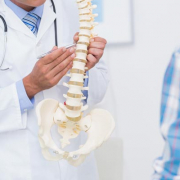SEAS Therapy: 20 Minutes of Daily Exercises at Home – Too Much or Too Little?
The International Society for Conservative Scoliosis Treatment (SOSORT) recommends exercises based on self-correction, which involves movement aimed at counteracting spinal curves, stabilising this position, and integrating it into daily life【1.
At ISICO, we have developed and use the SEAS approach. These exercises involve actively achieving the self-corrected position and working to maintain it despite various challenges. The exercises are designed to test the stability of the correction, requiring the patient to stabilise their spine and recover the correction if control is lost【2.
Gradually, as therapy progresses and through continuous practice, patients become more adept at incorporating self-correction into their daily lives—for example, while eating, walking, or doing homework.
How much time should be dedicated to practising the exercises each day?
Typically, 20 minutes daily is a significant commitment, especially as this therapy can last for a long time—sometimes several years. Patients are given one rest day per week, making the total weekly commitment about two hours.
Some parents, particularly at the beginning, ask whether more than the prescribed amount can be done. We usually respond that it is important to train without overwhelming the patient. For example, consider marathon training: a young person should not exhaust all their energy at the start and then abandon therapy, but instead maintain endurance and continue until skeletal maturity. At this point, we can say that the risk of scoliosis progression has decreased.
Conversely, reducing the duration would result in an insufficient period of practice. When we think about how much time young people spend on their phones daily, 20 minutes is not much.
How much time is needed for exercises in other scoliosis treatment approaches?
According to current data, the other most widely used approach globally is the Schroth therapy, developed in Germany.
This method involves hospitalisation in a specialised clinic for 3–4 weeks, during which patients undergo daily two-hour sessions to learn the exercises properly. After the training period, patients are instructed to continue the exercises at home and visit the clinic one to four times a month to ensure proper execution【3.
Alternatively, patients can learn the exercises through closely spaced individual sessions with a therapist, lasting 60–90 minutes, followed by weekly group sessions of 60 minutes, combined with a daily home exercise programme lasting 30–45 minutes【4.
This represents a significantly greater commitment than the 20 minutes required for SEAS therapy.
1. Negrini S, Donzelli S, Aulisa AG, Czaprowski D, Schreiber S, de Mauroy JC, Diers H, Grivas TB, Knott P, Kotwicki T, Lebel A, Marti C, Maruyama T, O’Brien J, Price N, Parent E, Rigo M, Romano M, Stikeleather L, Wynne J, Zaina F. 2016 SOSORT guidelines: orthopaedic and rehabilitation treatment of idiopathic scoliosis during growth. Scoliosis Spinal Disord. 2018 Jan 10;13:3. doi: 10.1186/s13013-017-0145-8. PMID: 29435499; PMCID: PMC5795289.
2. Romano M, Negrini A, Parzini S, Tavernaro M, Zaina F, Donzelli S, Negrini S. SEAS (Scientific Exercises Approach to Scoliosis): a modern and effective evidence based approach to physiotherapic specific scoliosis exercises. Scoliosis. 2015 Feb 5;10:3. doi: 10.1186/s13013-014-0027-2. PMID: 25729406; PMCID: PMC4344739.
3. Rigo M, Reiter C, Weiss H-R. Effect of conservative management on the prevalence of surgery in patients with adolescent idiopathic scoliosis. Pediatr Rehabil. 2003;6(3–4):209–14.
4. Burger M, Coetzee W, du Plessis LZ, Geldenhuys L, Joubert F, Myburgh E, van Rooyen C, Vermeulen N. The effectiveness of Schroth exercises in adolescents with idiopathic scoliosis: A systematic review and meta-analysis. S Afr J Physiother. 2019 Jun 3;75(1):904. doi: 10.4102/sajp.v75i1.904. PMID: 31206094; PMCID: PMC6556933.











Leave a Reply
Want to join the discussion?Feel free to contribute!